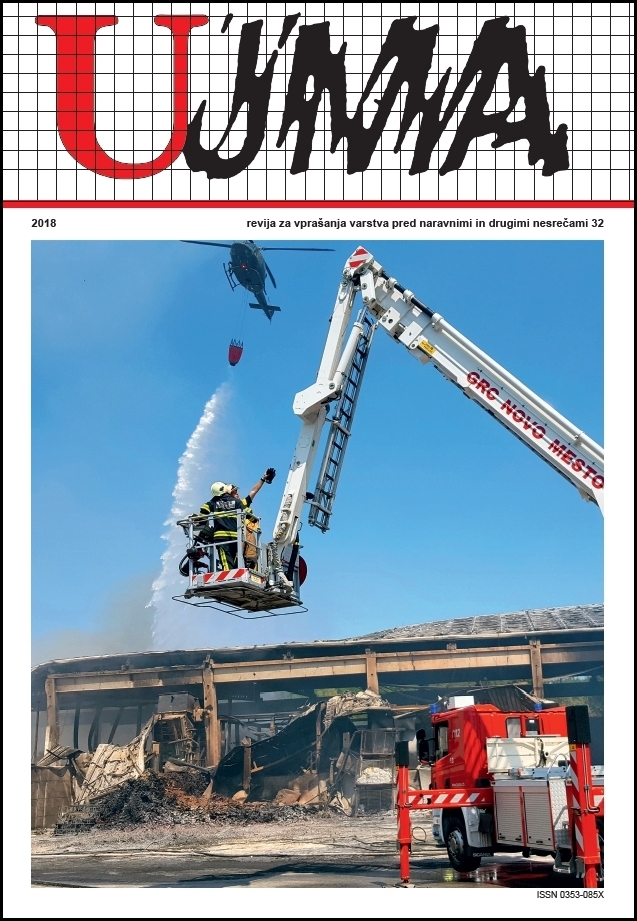SEISMOMETER AND ACCELEROMETER – A PAIR OF MEASURING INSTRUMENTS AT A SEISMIC STATION
Abstract
A modern broadband seismometer and seismic accelerometer measure different physical quantities of ground motion; the first measures velocity and the second, acceleration. Each has advantages and disadvantages, but when they are placed together and connected to a modern seismic six-channel acquisition unit, they form an advanced seismological measuring system. This system is capable of recording extremely weak seismic signals, as well as more powerful seismic shocks which occur in the vicinity of the seismic station. With both systems, the dynamic range of measurement is increased at this location, which will be shown by the data of an earthquake in the upper Soča valley in 2004. An additional reason for equipping earthquake stations with accelerometers and seismometers is for the duplication of the weakest part of the measurement system – the seismometer. From experience, we know that the seismometer is a weaker part of the equipment than the accelerometer. Quality control of equipment is the third reason why seismometers and accelerometers are installed together. Both meters overlap in a certain area of ground movement; this area is used to compare and check the measurements of both sensors.
References
Havskov, J., Alguacil G.,2006. Instrumentation in earthquake seismology. Dordrecht, Springer.
Lapajne, K. J.,2013. Inženirsko seizmološki terminološki slovar [Elektronski vir], Amebis, Ljubljana; Agencija RS za okolje, 2013. (Zbirka Termania), http://www.termania.net/slovarji/131/seizmoloski-slovar (nazadnje dostopano 5. 4. 2018).
Peterson, J., 1993. Observations and modeling of background seismic noise. Open-file report 93–322, U. S. Geological Survey.
Scherbaum, F., 2001. Of Poles and Zeros: Fundamentals of Digital Seismology. Springer.
Sinčič, P., Tasič I., 2015. 45 let delovanja kratkoperiodnega analognega seizmografa na vidni zapis na observatoriju na Golovcu v Ljubljani. Ujma, 31, 202–206.
Tasič I., 2015. Spodnja raven seizmičnega šuma v Sloveniji. Ujma, 29, 343–349.
Tasič, I., Mali, M., Pfundner, I., Pančur, L., 2016. Zajemalna enota Quanterra Q330HRS; preliminarni test šestih enot. Potresi v letu 2014 (ur. A. Gosar), ARSO, Urad za seizmologijo in geologijo, 50−54.
Vidrih R., 2015. Potres 12. julija 2004 v Zgornjem Posočju, Ujma,19, 60–73.
Vidrih, R., Sinčič, P., Tasič, I., Gosar, A., Godec, M., Živčić, M., 2006. Državna mreža potresnih opazovalnic (ur. Vidrih, R.), Agencija RS za okolje, Ljubljana.
Wielandt, E. Steim J. M., 1986. A digital very-broad-band seismograph. Annales Geophysicae 4, 227–232.
Wielandt, E., Streckeisen G.,1982. The leaf spring seismometer: design and performance, Bull. Seismol. Soc. Am., 72, 2349–2368.
Downloads
Published
Issue
Section
License

This work is licensed under a Creative Commons Attribution-NonCommercial-NoDerivatives 4.0 International License.
The articles are made available to the public under Creative Commons Attribution-NonCommercial-NoDerivatives 4.0 International (CC BY-NC-ND 4.0).


